
Film language
Schede di sintesi - Outlines
 |
Il linguaggio cinematografico Film language Schede di sintesi - Outlines |
I film sono luce. Films are light. Federico Fellini |
||
La luce Fellini dice una cosa allo stesso tempo ovvia e cruciale: la luce crea il film, senza di essa avremmo solo uno schermo nero. Al pari di ogni altro elemento del mondo raccontato dal film, la luce può essere diegetica (o intra-diegetica), se la fonte luminosa fa parte della messa in scena (ad es., una lampada accesa, o la luce naturale del sole in un ambiente esterno) o extra-diegetica, se la fonte luminosa è esterna, fa cioè parte dell'illuminazione artificiale del "set". Tutto ciò che viene messo in scena è condizionato dalla luce, a partire dal fatto che gettare luce significa anche creare ombre. L'ombra viene definita attached, quando la luce non illumina parte di un oggetto a causa della conformazione di quest'ultimo, come un viso parzialmente illuminato (1). Se, al contrario, un oggetto blocca la luce, viene proiettata un'ombra (cast), come in (2), dove delle sbarre si infrappongono tra la persona e la fonte della luce sulla destra. In (3) sono presenti entrambi i tipi di ombre. Naturalmente la luce possiede caratteristiche intrinseche, che possono essere adeguatamente controllate: ad esempio, la tonalità (luce calda o fredda) o la qualità: il grado di intensità dell'illuminazione determina una luce più dura (hard) o più smorzata (soft). Nel primo caso, si avranno più contrasti, che potranno aumentare la drammaticità di una scena (4); nel secondo caso, una luce più diffusa o morbida può creare un ambiente più "rilassato" (5). Anche la direzione della luce, cioè la sua traiettoria dalla fonte all'oggetto illuminato, può essere manipolata: possiamo così avere una luce frontale (che tende ad eliminare le ombre)(6), laterale (che mette in evidenza, ad esempio, i lineamenti di un volto)(7), dall'alto (8) o dal basso (9). Se la luce proviene dallo sfondo (backlighting) ed è l'unica fonte, tende a produrre delle silhouette (controluce)(10), mentre se viene combinata con altre fonti frontali produce un effetto "di contorno" (11). Il cinema classico hollywodiano ha utilizzato spesso il sistema di illuminazione "a tre punti" (12), in cui il soggetto viene illuminato contemporaneamente da una luce-chiave o primaria, frontale (key light), che produce le ombre più nette, da una luce "di riempimento", laterale (fill light) e da una luce posteriore (back light), che evidenzia il soggetto rispetto allo sfondo. Riallacciandoci a quanto abbiamo detto sulla qualità hard o soft della luce, la funzione della luce di riempimento e della luce posteriore è di creare meno contrasti ed ombre più "trasparenti" (high key illumination) rispetto all'utilizzo di luci fortemente contrastate, che creano ombre più marcate (low key illumination). |
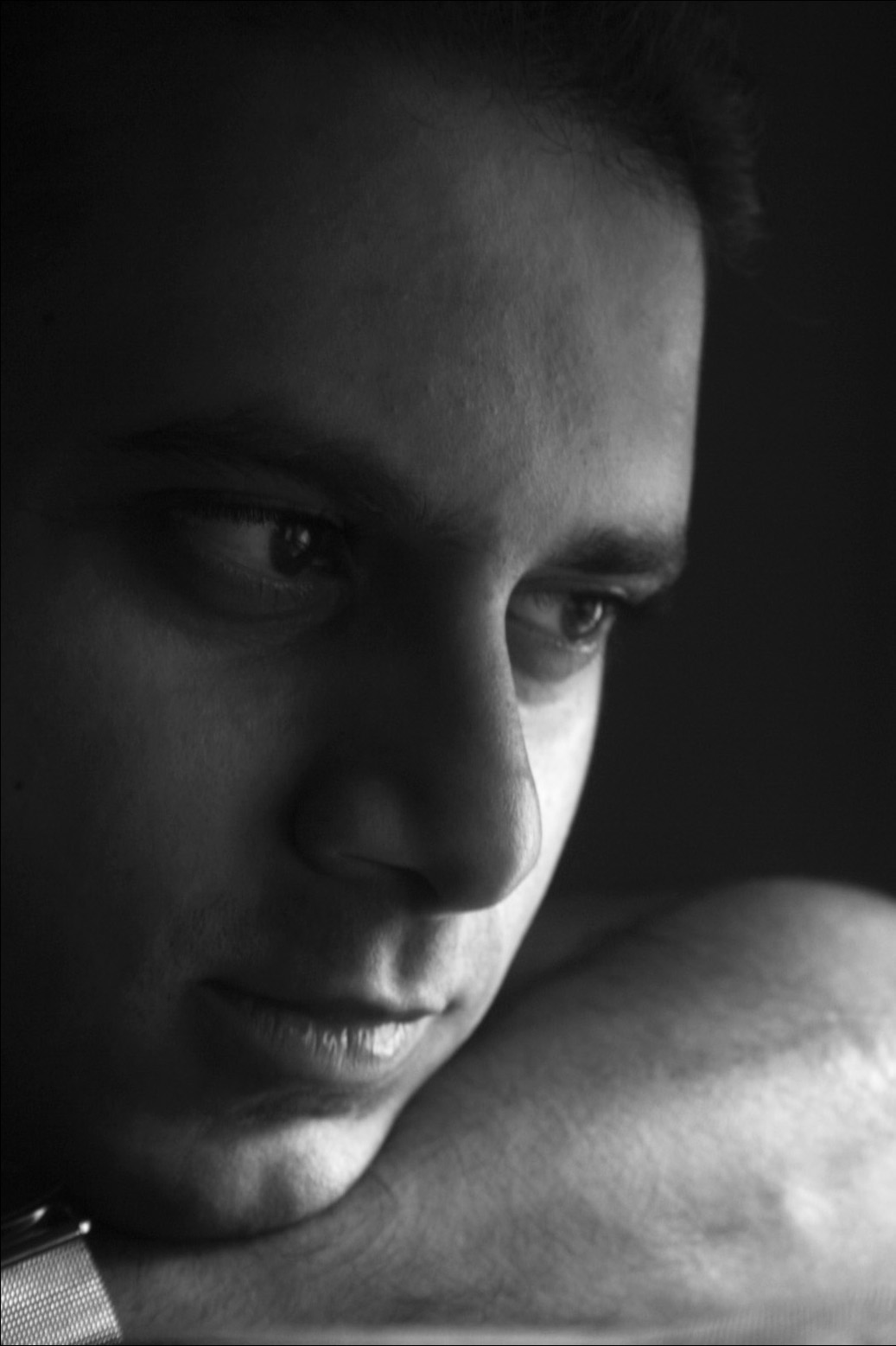 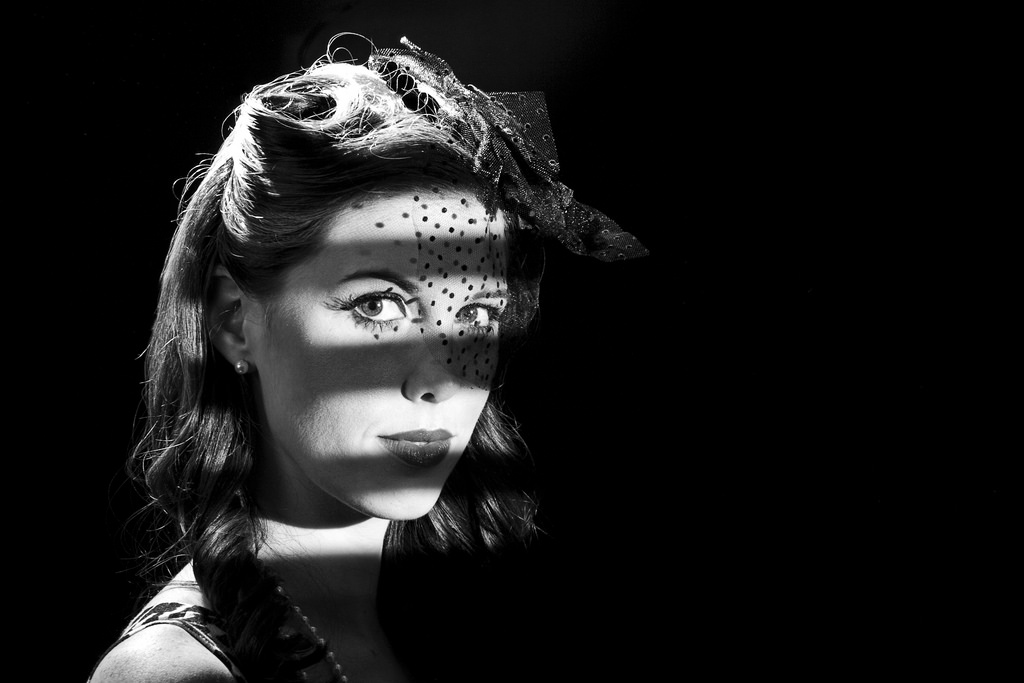 (1) (2) 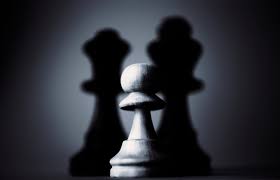 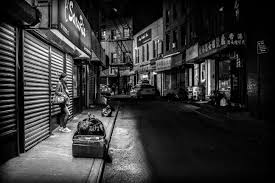 (3) (4) 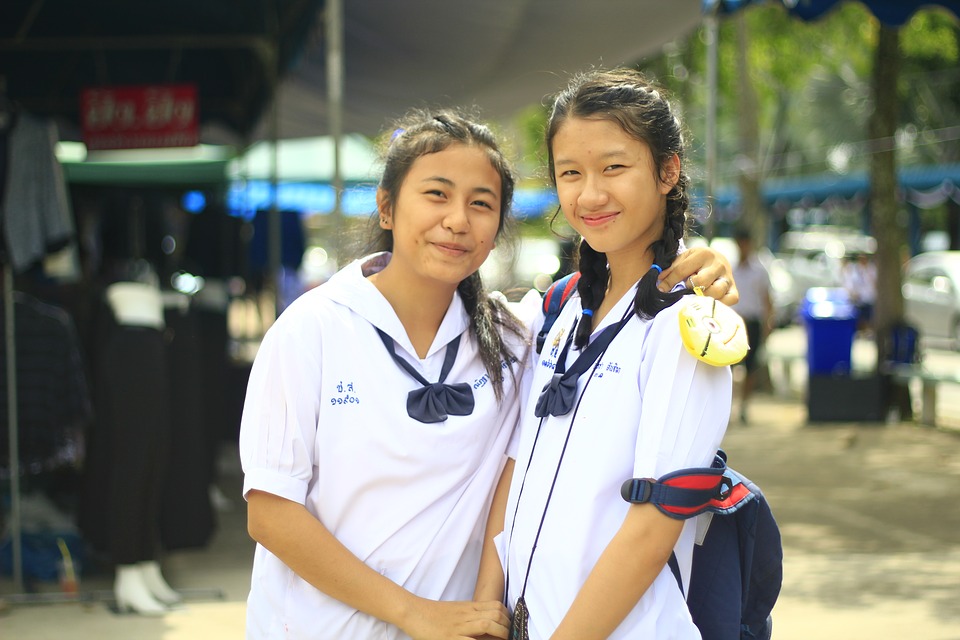 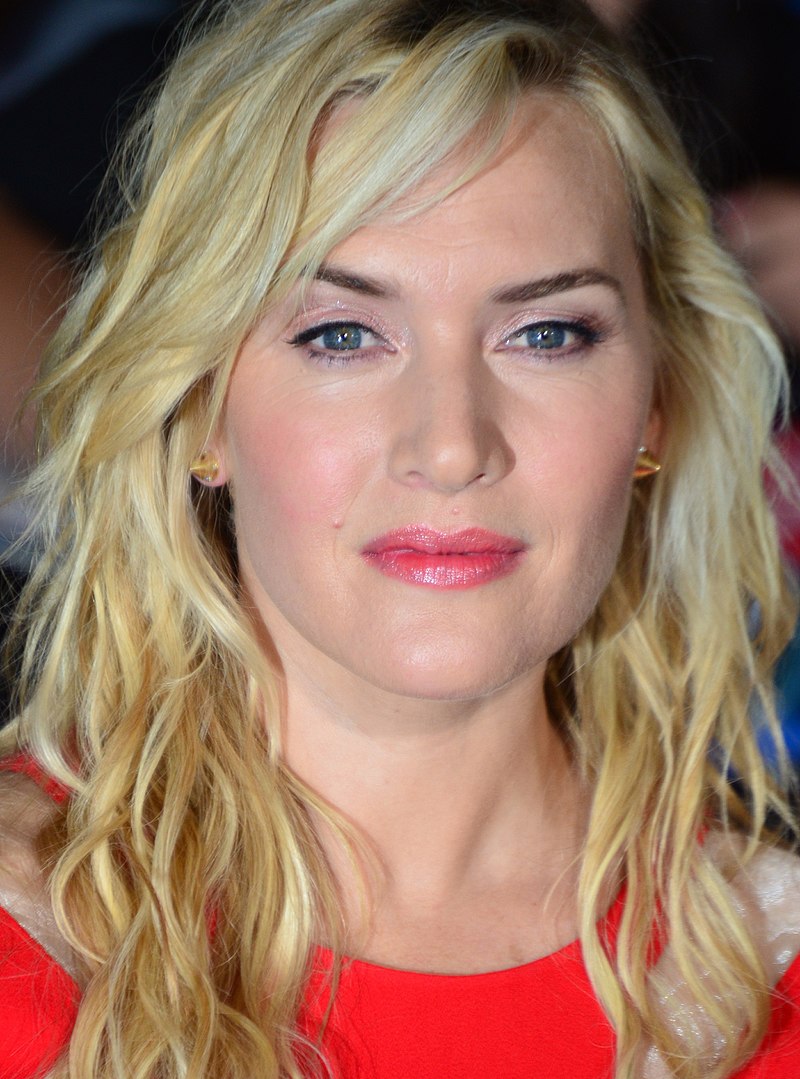 (5) (6) 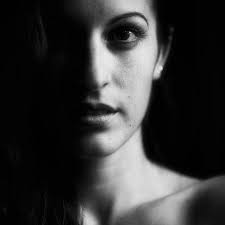 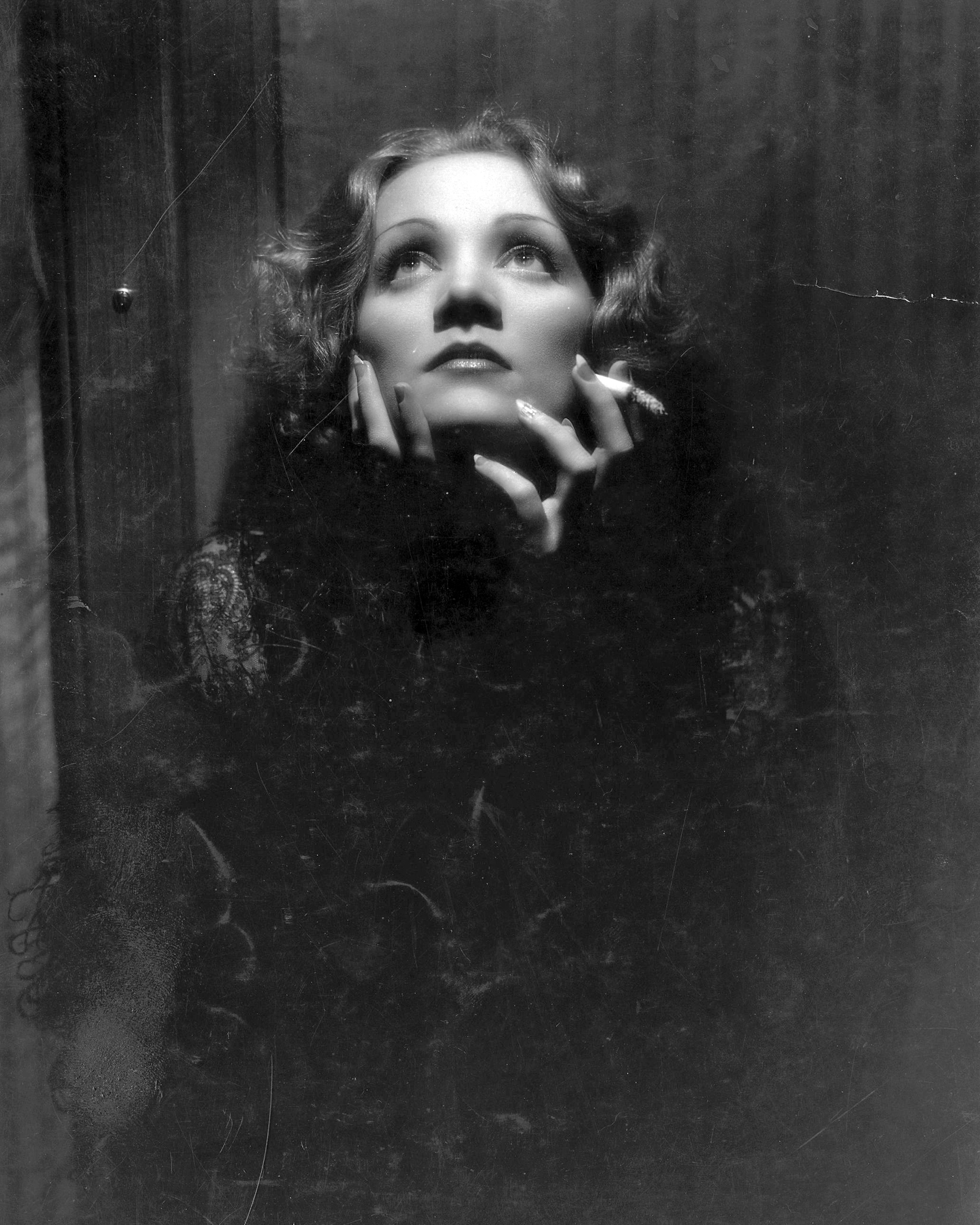 (7) (8) 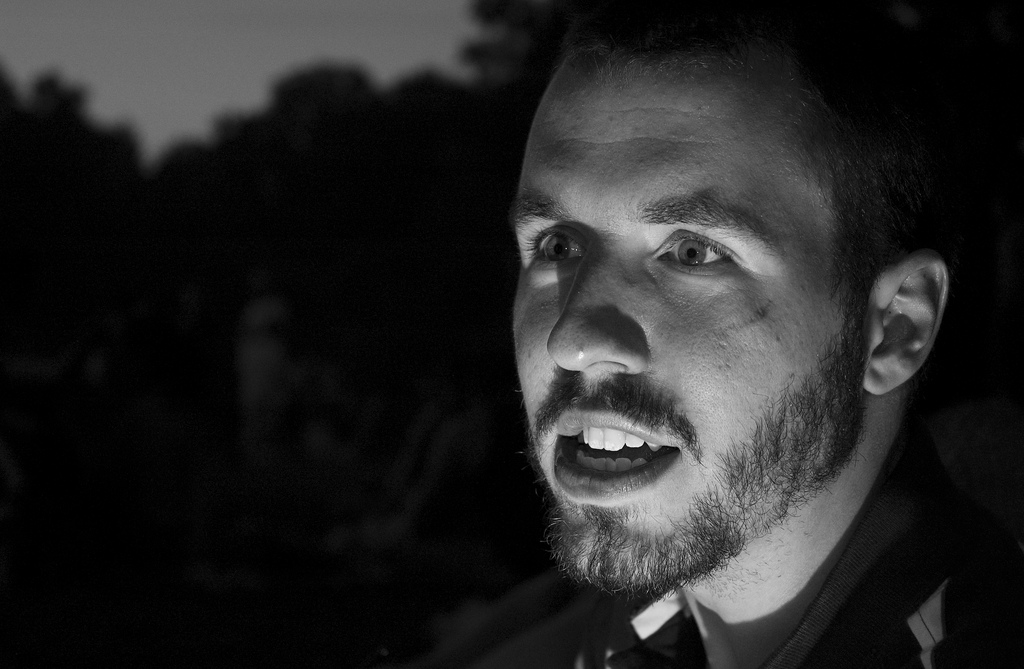 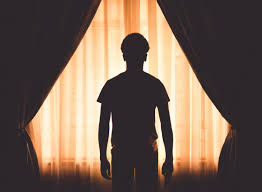 (9) (10) 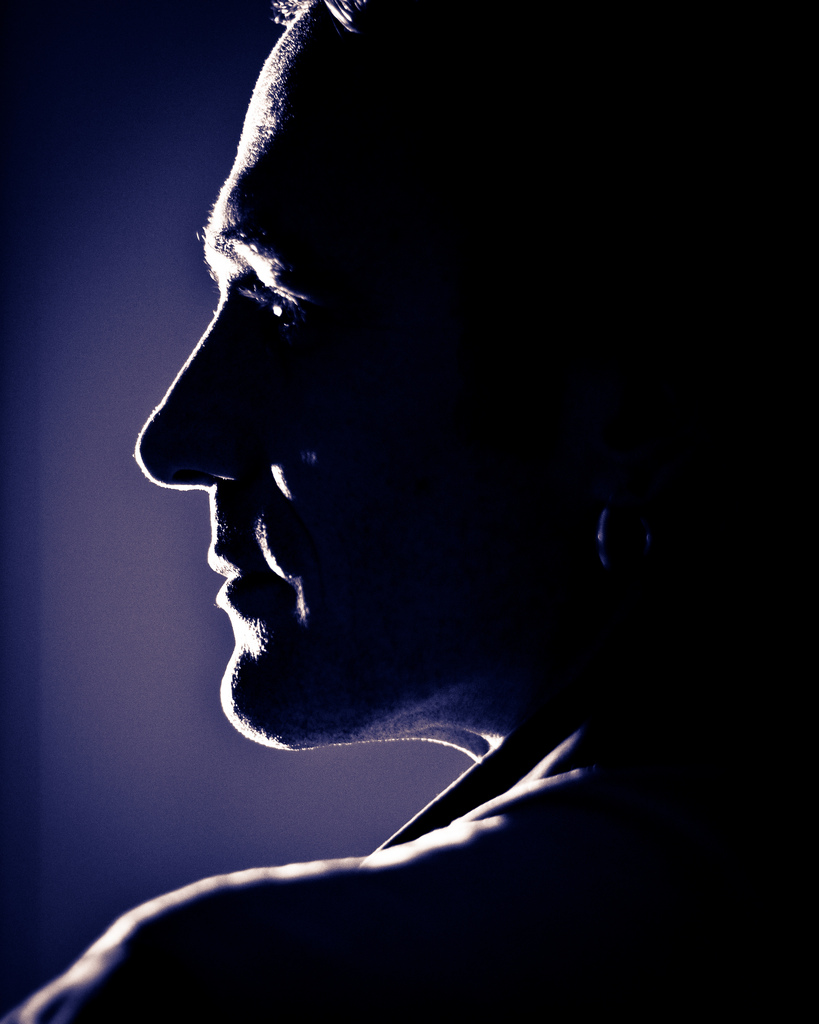 (11) 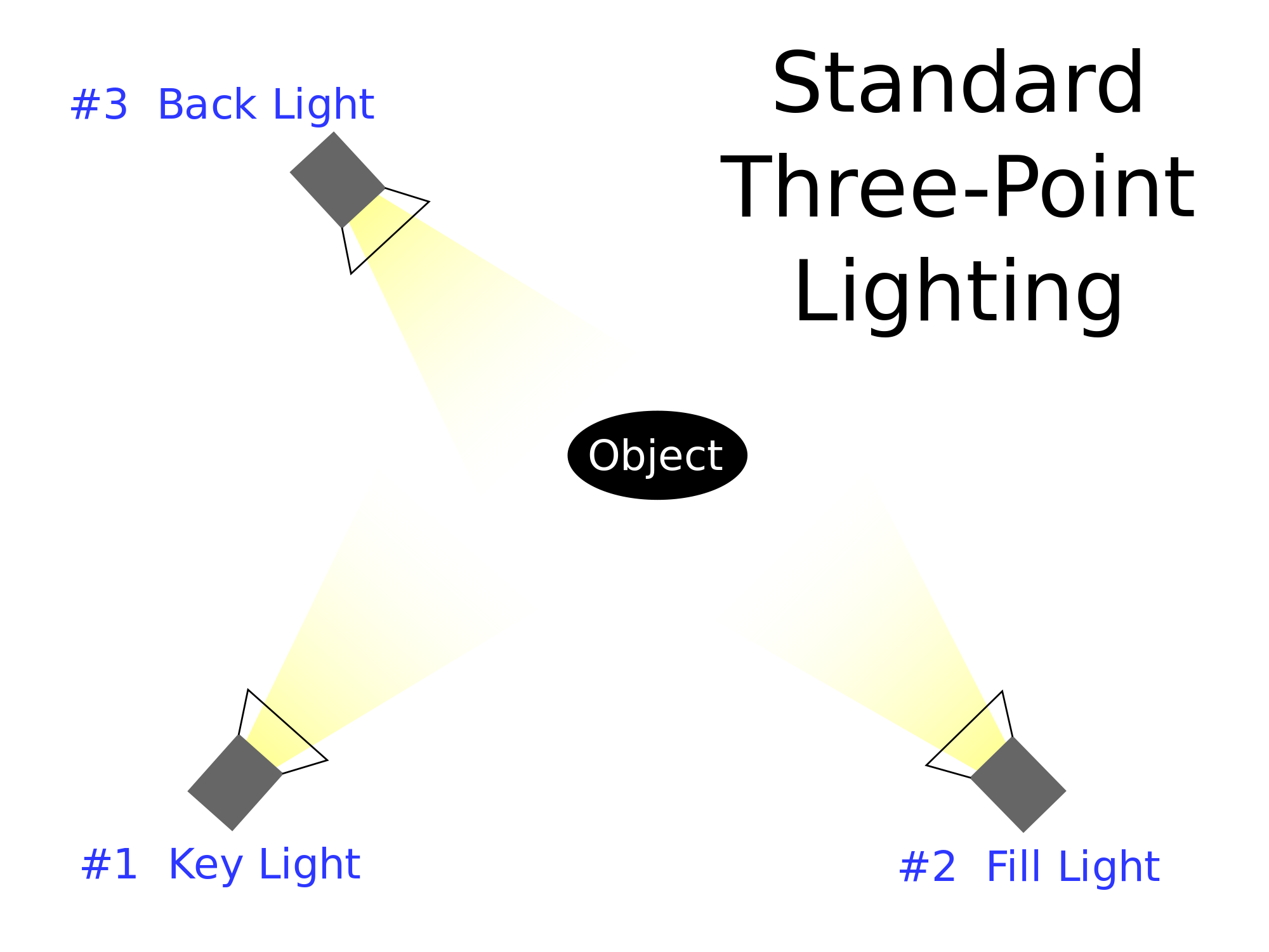 (12) |
Lighting Fellini says something which is at the same time obvious and crucial in filmmaking: light creates film - without it we would only have a black screen. As for any other element of the world narrated by the film, light can be diegetic (or intra-diegetic) if the source is part of the mise-en-scene (e.g. a lamp, or the natural light of sunshine outdoors) or extra-diegetic, if the source is external, i.e. is part of the artificial lighting of the set. All that is part of the mise-en-scene is conditioned by light, starting from the obvious fact that using light also means creating shadows. Attached shadows result from light failing to reach part of an object because of the object's shape, as with a partially lit face (1). If, on the other hand, an object blocks light, the result is a cast shadow, as in (2), where bars stand between the person and the source of light on the right. In (3) you can see both types of shadows. Obviously light has some intrinsic qualities, which can be adequately controlled: for example, tonality(cold or warm), or quality: the degree of intensity of lighting causes light to be on the hard, rather than on the soft, side. In the former case, strong contrasts can add to the dramatic impact of a scene (4); in the latter case, a softer kind of light can create a more "relaxed" setting (5) Light direction, i.e. its path from its source to an object, can be manipulated too: light can thus be frontal (which tends to eliminate shadows)(6), lateral (which emphasizes, e.g. a face's features)(7), from the top (top lighting)(8) or from below the subject (underlighting)(9). If light comes from the background (backlighting) and is the only source, it tends to produce silhouettes (10), while if combined with other frontal sources can produce a "contour" effect (edge lighting or rim lighting). Classical Hollywood cinema has often used the standard "three point" lighting system (12), where the subject is simultaneously lit by a key (or primary) frontal light, which produces the sharper shadows, by a fill, lateral light and by a back light, which makes the subject stand out from the background. Recalling what we noted about the hard vs soft quality of light, the function of the fill and the back lights is to create fewer contrasts and more "transparent" shadows (high key illumination) while the use of highly contrasted lights create sharper shadows (low key illumination). |
 |
Per
saperne di più ... * Dal sito Cinema e Scuola: - La luce nel cinema * Dal sito Duels: - Luce dei miei occhi. Il cinema e la luce * Dal sito Raiscuola: - Video Luce e fotografia. Il cinema come si fa * Dal sito Enciclopedia del Cinema Treccani: - Illuminazione * Dal sito Cinescuola: - La resa figurativa: luminosità, contrasto, colore, illuminazione |
 |
Want to know more? * from The Conversation website: - Explainer: Film lighting * from the Entertain The Elk YouTube channel: - Stankey Kubrick: Practical Lighting * From the American Film Institute Screen Education Center: - The Illustrated Stages of Three-Point and Set Lighting, pp. 71-75 |
